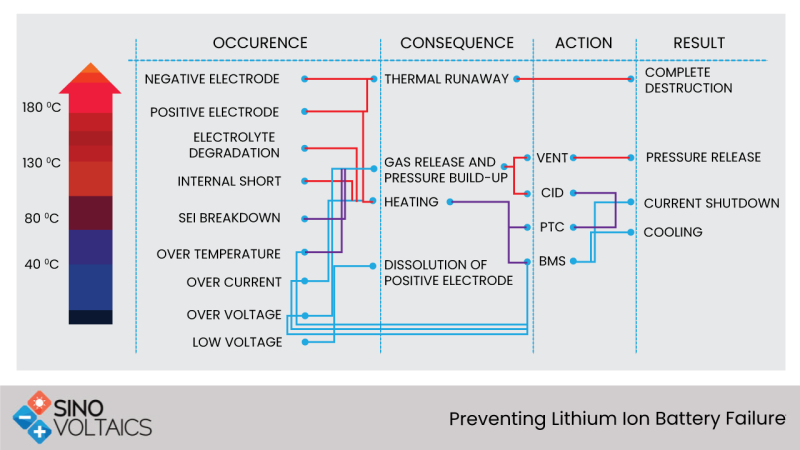Preventing Lithium-Ion Battery Failure
One of the few things prominently universal in modern technology at home, in the office and various industries, is the usage of lithium-ion batteries. It is popular because of its cost to performance ratio. These batteries can be used in a waste array of technology - cellphones, EVs, medical devices etc. Failures and safety issues have been on the rise and will continue to increase despite our best efforts in design and product handling. According to various surveys[1], lithium-ion battery accidents are close to one in forty million, provided they are stored and operated within required circumstances. However, as a single bad incident may cause health and property risk, the need for prevention and proper oversight is continuous.

Mitigating Lithium Battery Failures
The process of mitigating failures of lithium batteries starts with an understanding of what factors cause failures. The most important thing that we need to understand is that lithium batteries are not just one rugged electrical component. They are somewhat sensitive chemical devices. Therefore, the design and manufacturing processes are as critical as the necessary, safe handling and usage.
Improving Design
Good design results from Failure Modes, Mechanisms, and Effects Analysis (FMMEA) of the devices.[2] FMMEA is more extensive than Failure Modes Analysis (FMA), and the underlying mechanisms and their effects need to be observed as well. These analyses result in improved layouts, materials, dimensions, manufacturing processes and packaging.
Battery Management Systems and Safety Devices
- Current Interrupt Device (CID)
- Protects against over-current that breaks the internal electrical connection when the internal pressure reaches a set value.
- Positive Temperature Coefficient of expansion (PTC) disks are often placed in the cell header to limit high current.
- Current Limiting Fuses may be used in place of PTC devices when a sustained discharge is not preferred.
- Diodes may be used to prevent inadvertent charging (blocking diode) or to steer the discharge current around a weak cell such as in a discharge (bypass diode).
Safety and reliability schemes include the incorporation of basic protections such as current limit fuses, Positive Temperature Coefficient (PTC) thermistors, blocking diodes and Current Limiting Devices (CLD). Improved schemes incorporate Battery Management Systems (BMS), which can be translated into something like putting brains and muscles into a battery pack. The BMS, having modern electronics controlled by advanced software, is responsible for:
- Advanced monitoring and management
- Improving levels of safety
- Optimizing performance
- Controlling charge rates
- Promoting longevity
Careful Use and Handling
Most failures of lithium-ion batteries can be attributed to improper use such as:
- Charging / discharging
- Using at high or low temperatures,
- Storage/shipping under risky conditions.
Lithium batteries have a well-defined safe window of operation in terms of voltage and temperature. Charging above 4.2 volts, and discharging below about 2 volts will cause permanent reduction of capacity, produce dendrites, which could raise the probability of internal short circuit. Similarly, operating at elevated temperatures will cause higher currents to flow for the same voltage, causing heating, gassing, and even fire and thermal runaway. Since the battery is seldom lying alone, it can cause damage to the surrounding environment as well.
A Short List Do’s and Don’ts
- Never overcharge. If a BMS is present, it will take care of it
- Never over drain
- Operate within a specified temperature range
- Never hit, throw, expose to fire, excessive sunlight, or puncture.
- Do not leave discharged for long durations
- When shipping, use separators between units
Lithium batteries are safe when stored and handled well. Adhering to specific safety and storage requirements mean that we can reduce the rate of battery failures and increase the safety of usage.
__
[1] Doughty DH , Roth EP . A general discussion of Li ion battery safety. Elec- trochem Soc Interface 2012; 21 :37–44 .
[2] Christopher Hendricks, Nick Williard, Sony Mathew, Michael Pecht*, , A failure modes, mechanisms, and effects analysis (FMMEA) of lithium-ion batteries, Journal of Power Sources 297 (2015) 113e120
